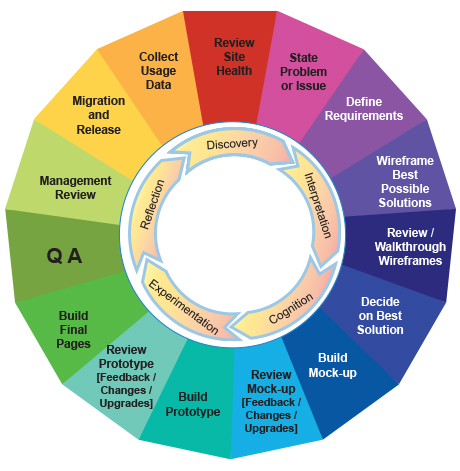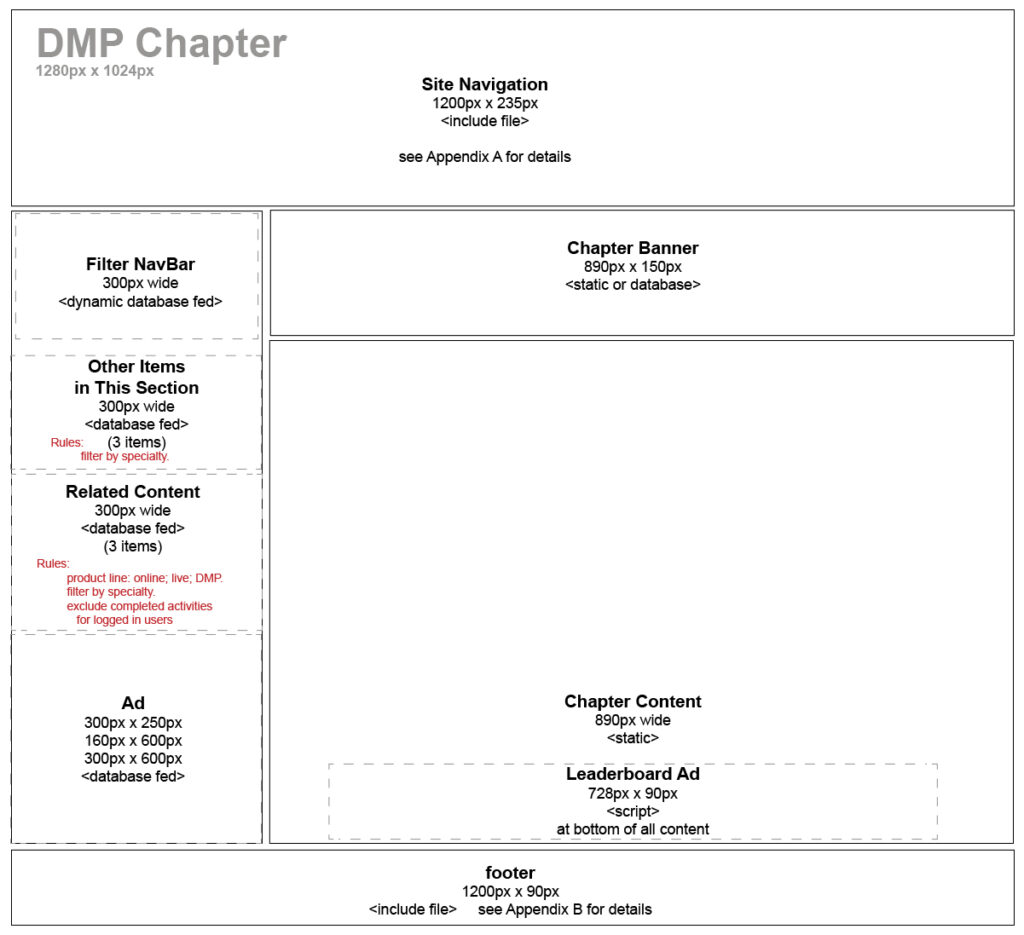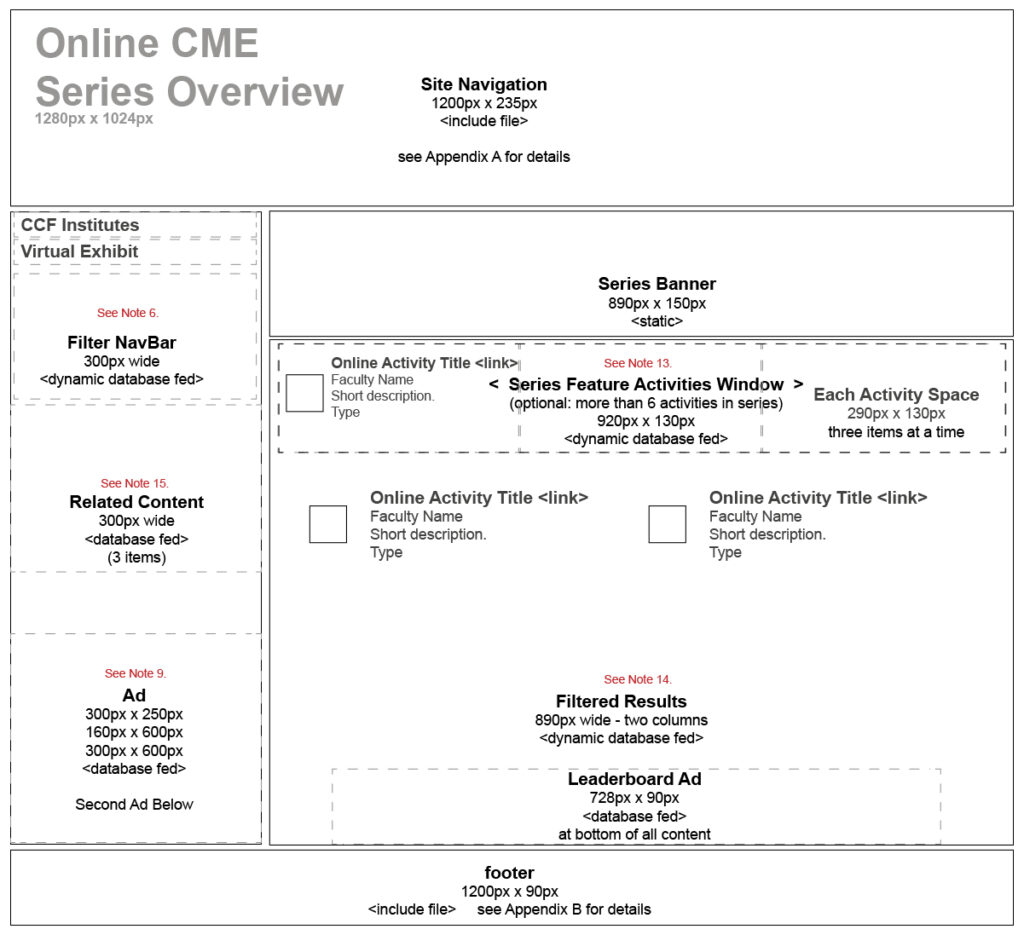We followed two integrated philosophies where Web development were concerned. These consisted of a continuous improvement process of Agile web design combined with Learning Design. This approach worked because our team was small (two-three people) and it was the best way we could accomplish the educational goals of the Cleveland Clinic while building a top tier educational site.
CME Web Process
The number of Continuing Medical Education (CME) activities accredited by the Accreditation Council for Continuing Medical Education (ACCME) went from a few dozen when I started to over 350 activities per year three years later. Each activity was accredited for one to three years and was replaced with updated or new content at the end of its lifespan. Our group was able to publish over two-thousand individual activities over five years, all while working to take our site from an average to a world-class website (see: Awards).

Discovery
Every December we performed a month-long poll of our visitors at the end of the year to see how satisfied they were with the site and inquired about any features or additional content they would like to see. In January our department would do an assessment of our site, the poll and pitch improvements we could make.
We invited internal stakeholders to our annual meeting to present new issues and problems they have encountered and discuss solutions that would solve them. We also built a capabilities brochure [see case study] to give the people that interacted directly with the physicians a complete list of all of the educational activity types we could produce, as well as, the learning style each activity utilized. This allowed Physicians to approach the educational program they were authoring from the aspect of their audience, how they learned and how to best present the information.
Interpretation
After we discussed and decided what goals we would set for the year, we then outlined the requirements that would define ‘success’. We would assign work based on the strengths of each team member. At this point lo-fi wireframes would be produced to show possible changes to architecture, content or features to be added.
Once the wireframes were complete, we would set time aside to discuss and review the project to make sure we covered all the project requirements. We also discussed any new information or technology that could improve the functionality and usability of the website, within the parameters of the project.
Cognition
When the review was complete and all potential solutions were discussed, our manager would decide which project was the best solution. Once that was decided, we started researching options and producing hi-fi wire frames. The Review process would to walk through each option, discuss the pros and cons of each, and decide on the best way to solve the problem. It also offered an opportunity to share any new information or tips we discovered – to make everyone in the department better.
Experimentation
Now the work of accomplishing our project began. We coded a prototype page based on the wire frames and tested any technology implemented for the project. Once the prototype was reviewed and accepted, we began building the final pages that would end up as part of the site.
Reflection
After a thorough quality assurance review, we sent the project to our Physician Director, for final acceptance review. Once we had approval we planned everything required for migration. The project was then migrated to the live site, making it available to our audience.
Periodically I would look at traffic and usage with Google Analytics to make sure the new content or feature was being accessed and used as intended.
Continuous Improvement Process
When our ideas and plans were larger than the resources currently available, we would try to build in as much of the infrastructure as we had time for, and that project would become a standalone project to be worked on during slow periods, or added to the next large site-wide project.

